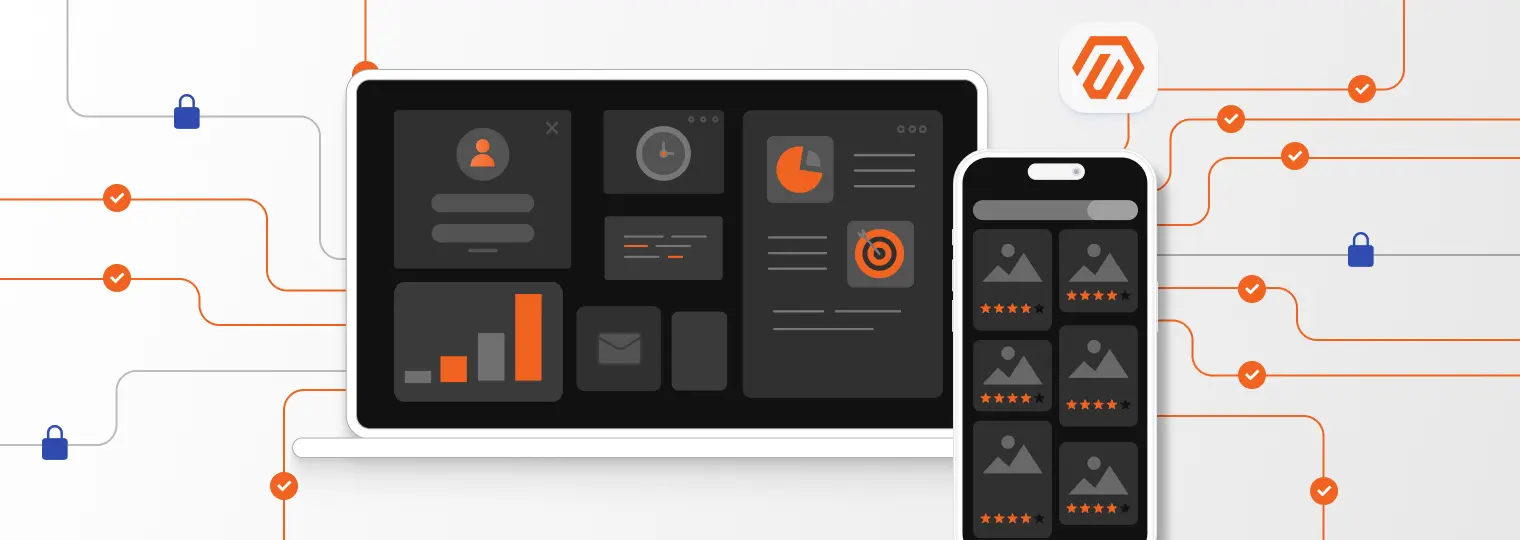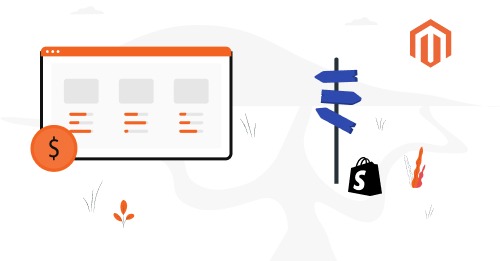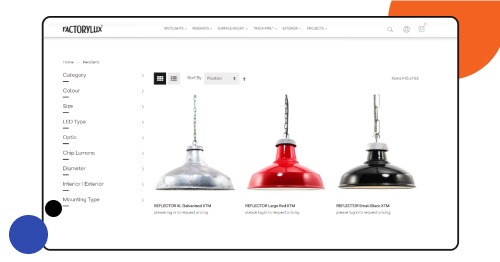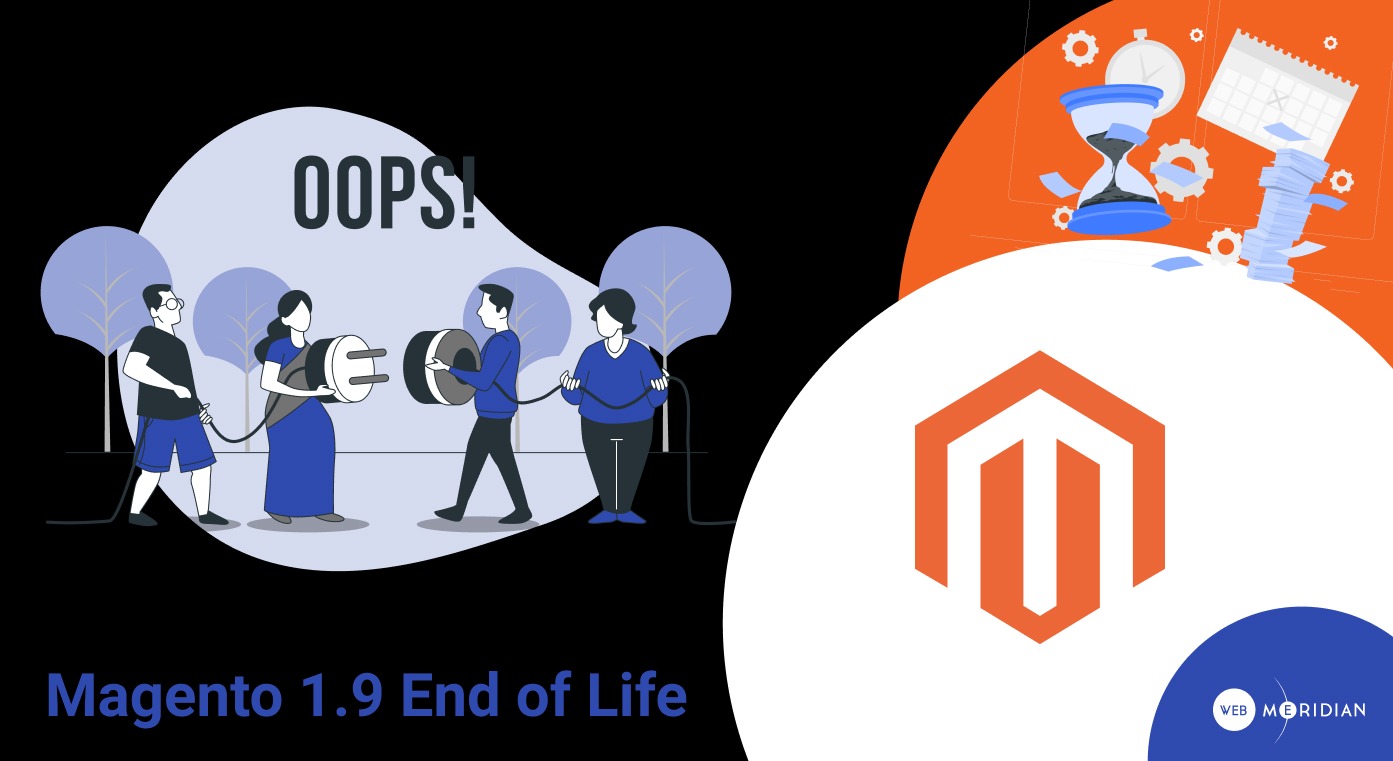- Magento 2 Upgrade: Magento 2.4.8 Release
- How to Update Magento Version | DIY Guide vs. Professional Assistance
- Upgrading Magento 2.3 to 2.4: What’s New in Version 2.4.7?
- How to Upgrade Magento 2.3 to 2.4.7 Correctly in 2025
- Adobe Commerce 2.4.7-p1: Keep Your eShop Secure
- Why Should You Update Magento 2.3 to 2.4?
- 7 Mistakes To Avoid in Magento 2 Upgrade
- End Of Support For Magento 2.3 | When Will It Happen, and What Should I Expect?
- How to Update Magento 2.3 to 2.4
- Steps to Magento Upgrade from 2.3.X to 2.4
- Magento 2.4.3 Release Notes | Benefits and Features for Merchants
- Boost Sales with Astonishing Speed, like Helly Hansen Did with Magento 2
- Final Keywords on How to Upgrade to Magento 2.4.3
Get A Magento Expert Consultation
Our Adobe Business Practitioner conducts site audit to optimize your eCommerce weaknesses.

Magento 2 Upgrade: Magento 2.4.8 Release
On April 8, 2025, Adobe officially rolled out Magento 2.4.8. This upgrade delivers major improvements to security, speed, and platform compatibility, all engineered to keep your store running clean, fast, and safe. Over 500 fixes and major enhancements make this version a must for any serious store owner.
Upgrading now means you stay secure and supported through April 2028. If you’re running an outdated version, now’s the time to upgrade Magento to version 2.4.8.
So what’s new?
Magento 2.4.8: Essential Updates
- Better file management, media file handling, and compatibility through the upgrade to league/flysystem 3.x;
- PHPUnit upgrade from Version 9 to 10, with backward compatibility and WebAPI tests;
- Magento 2.4.8 supports MySQL 8.4 LTS and MariaDB 11.4, giving your store a more stable and scalable data layer—exactly what high-traffic stores need.
- Extended opportunities for content editing through TinyMCE 7.3.0 support and WYSIWYG editor;
- The updated require.js v2.3.7 speeds up JS module loading. No more sluggish front-end experiences;
- The advanced capacity is attained by replacing outdated libraries with progressive solutions, such as Uppy and jsTree.
- Critical system libraries are now updated for performance and security:
-
- monolog (logging)
- wikimedia/less.php (CSS preprocessing)
- jquery/validate (form validation)
- moment.js (date handling)
- The Upgrade Compatibility Tool (UCT) fully supports MySQL 8.4, helping you avoid compatibility nightmares during future updates.
- Magento now works with Google Maps API 3.56, the latest supported version.
- Optimized PHPUnit 10 subscribers make test management smoother and more reliable, especially helpful in large development teams or outsourced environments.
Stronger Performance
The fundamental performance enhancements include improvements in database interactions, upgrades in PHPUnit and the WebAPI test framework, and implementation of modern libraries.
As a result, the renewed platform delivers streamlined file management, more efficient logging, quicker CSS pre-processing, smooth testing procedures, faster load times, and elevated UX. The system eliminates legacy issues and offers optimal performance under greater loads. The updated indexer configuration (now “Update by Schedule” by default) also means fewer hiccups during peak load times.
Security Improvements
The Magento 2 upgrade prioritizes removing the system vulnerability issues detected in the previous versions. The flaws were addressed by replacing dependencies like Require.js with the newest versions and enhancing the GraphQL API, among other methods. This reinforced security and elevated operational efficiency.
- Duo Security 2FA now uses the latest Web SDK v4, while encryption key management has been made more flexible with new CLI commands.
- OTP settings were corrected to fix errors from earlier versions, and subresource integrity (SRI) was reworked so you don’t need to redeploy static content after clearing the cache.
- Combined with enhancements to the GraphQL API and more secure handling of external scripts, your store stays guarded without sacrificing performance.
Advanced Compatibility
The Magento upgrade includes broader integration options.
- The upgrade fully supports PHP 8.4, MariaDB 11.4, and MySQL 8.4—giving developers more stable ground to work from.
- RabbitMQ 4.x support allows migration to modern quorum queues, and OpenSearch 2.19 is now the go-to search engine, replacing Elasticsearch 7 and 8.
- Tools like UCT (Upgrade Compatibility Tool), EAT, and SVC have been refined to streamline testing and database transitions.
- With better system compatibility, improved testing coverage, and support for the latest Google Maps API, the platform is well-prepared for everything from PWA development to AI-driven extensions.
More Fixes That Matter
A total of 582 issues have been resolved in the core code, addressing a wide range of functionalities, including:
- Admin Panel: Improvements to the user interface and administrative workflows.
- Checkout Process: Enhancements to the checkout experience, reducing friction and potential errors.
- Catalog Management: Refinements in product and category management for better organization and display.
- API Integrations: Stabilization and expansion of API capabilities for smoother third-party integrations.
- GraphQL Enhancements: Significant improvements to GraphQL APIs, facilitating migration to the new Adobe Commerce Storefront powered by Edge Delivery.
Therefore, the upgrade to Magento 2.4.8 delivers an enhanced blend of factors for successful eCommerce growth, optimizing consumer experience and back-end reliability.
Upgrade to Magento 2.4.8 Now
Our Magento experts are ready to upgrade your store from any outdated version to the latest 2.4.8. Secure your consultation and receive professional services to enhance your e-commerce platform.

How to Update Magento Version | DIY Guide vs. Professional Assistance
Updating your Magento version is a complex process that requires technical expertise and careful planning. Each update is unique, with custom modules and potential issues that can arise throughout the process.
Adobe Certified Professional, a Magento 2 developer with 8+ years of software development experience, prepared a detailed guide on the Magento update process, deliverables, and pitfalls. Our expert, Pablo Poberezhnyi, has worked on many different projects, ranging from small parsers and SPA development to highload with a load of 10,000 clients per day.
1. Pre-Update Preparations
1.1 Create Backups: Before starting the update process, ensure you have backups of your composer files and the entire database. It’s best to create a complete backup of your project to safeguard against potential data loss.
![]()
![]()

1.2 Check Magento Requirements: Review the Magento system requirements to ensure compatibility with your server environment, including PHP, MySQL, Elasticsearch versions, and other dependencies. Visit the Magento system requirements page for detailed information.
2. Initial Update Steps
2.1 Install the Required Magento Version: After verifying the requirements, install the needed Magento version on your server.
2.2 Run Composer Command: Execute the composer command to start the update. Be prepared for a list of errors that will need to be addressed. The older your current version, the longer the list of potential issues.
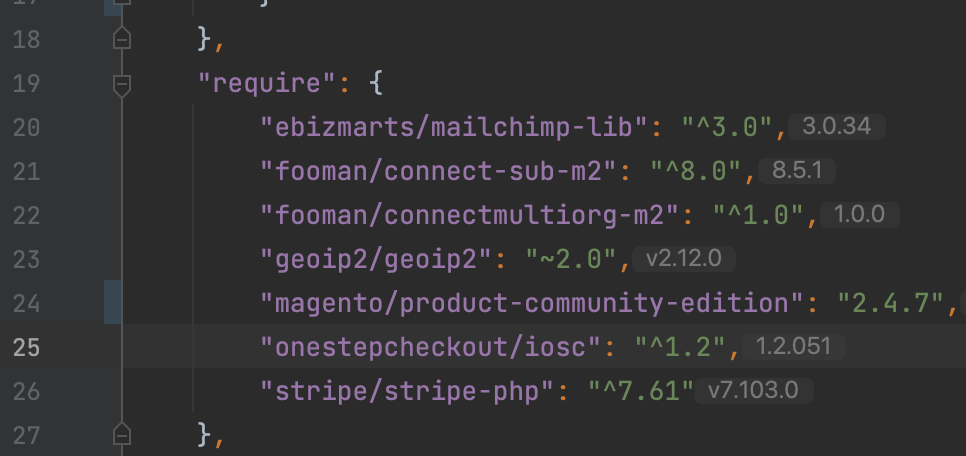
3. Handling Errors and Dependencies
3.1 Fixing Errors: You will spend a significant amount of time searching for extensions, installing them, and fixing errors during installation. Address each issue one by one.

3.2 Dependent Modules: Identify and solve issues related to dependent modules. If newer versions are unavailable, you may need to manually fix issues such as links to non-existing classes.

Some modules may require physical deletion from config.php.

3.3 Document Changes: Create a list of changed or removed modules and store it for future reference.
Free eCommerce Website Audit
Certified eCommerce experts will analyze your online store for over 120 different parameters. Receive a complimentary audit report and recommendations from WebMeridian experts.

4. Checking Custom Code
4.1 Composer Patches and Custom Code: Review all your composer patches and custom code in the app/code or app/design folders. Address issues related to non-existing classes or methods.

4.2 Compilation Commands: Run compilation commands (bin/magento setup:upgrade and bin/magento setup:di:compile). Resolve any errors that arise, which could be due to install scripts or other issues.
5. Testing and Debugging
5.1 Testing the Admin and Frontend: Test both the admin and frontend of your site to identify issues such as white or blank pages, errors with non-existing keys, and other problems. Check log files for hidden errors.
5.2 Integrations and Third-Party Apps: Ensure all integrations and third-party applications are working correctly. Verify their connections and address any issues.
5.3 Security Check: Conduct a security check to ensure there are no direct database queries in your .phtml files and that the object manager is only used in test classes. Avoid using deprecated classes and PHP functions.
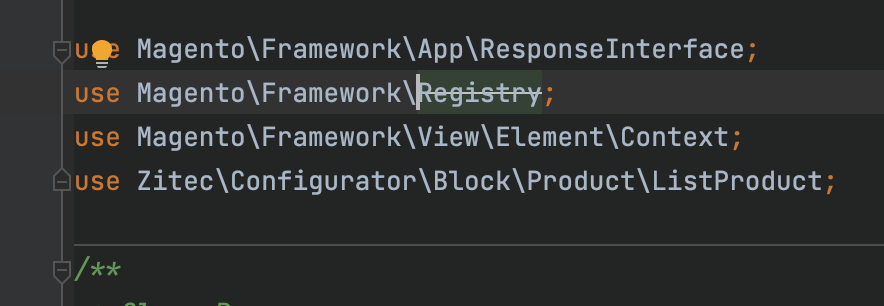
6. Post-Update Checks
6.1 Service Functionality: Confirm that all services, including the frontend and cron jobs, are functioning correctly.
7. Professional Assistance With Custom Modules
Updating Magento can take anywhere from a few days to several weeks, depending on the size and complexity of your project. The process requires experience, knowledge, and patience. The more time you spend on thorough testing, the fewer urgent fixes you will face later. Remember, professional help can save time and ensure a smoother update process.
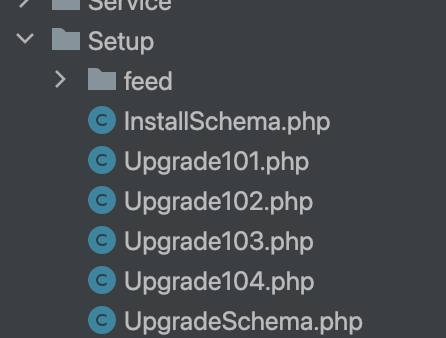
If your project involves updating custom modules, we recommend seeking professional assistance. Custom modules often require extensive checks and fixes, including database schema updates, service contracts, and UI components. For example, you can convert install and upgrade schemas using Magento commands:
bin/magento setup:install --convert-old-scripts=1
bin/magento setup:upgrade --convert-old-scripts=1
Alternatively, generate a patch file:
bin/magento setup:db-declaration:generate-patch [options] <module-name> <patch-name>
Ensure you manually check and modify the generated db_schema.xml or newly created patches as needed.
Conclusion
While this guide provides a comprehensive overview, it’s important to emphasize that updating Magento is not a task to be taken lightly. The process involves intricate details and a high level of technical know-how. Attempting this on your own could lead to prolonged downtime, potential data loss, and new technical issues.
Our team at WebMeridian consists of certified Adobe Commerce experts with extensive experience in Magento updates and customizations. We have successfully navigated numerous Magento projects, ranging from small updates to large-scale overhauls. Our expertise ensures that your update will be handled efficiently, minimizing disruption and maximizing performance.
By choosing our professional services, you can avoid the common pitfalls and complexities of the update process. We will handle everything from initial backups to post-update testing, ensuring your Magento store runs smoothly and effectively.
Contact us today to ensure your Magento update is completed efficiently and correctly, allowing you to focus on what you do best—running your business.
Upgrading Magento 2.3 to 2.4: What’s New in Version 2.4.7?
Magento Open Source 2.4.7 brings numerous features, improvements, and bug fixes aimed to facilitate the operation of ecommerce stores. The primary highlights include PHP 8.3 support, the newest versions of Core Composer dependencies and third-party libraries, increased GraphQL coverage for custom attributes and GraphQL resolver caches, and support for FedEx and UPS services. Besides, the upgrade of Magento 2.3 to 2.4 fixes a set of existing problems for a hassle-free user journey.
Let’s examine the key progress areas.
Security improvements
Security threats pose ever-growing challenges to online businesses. The new Magento release removes security-related issues and introduces over a dozen upgrades.
- Extra payment security: Payment information can now be transferred through REST or GraphQL APIs, and merchants can set rate limits.
- The default admin URL generation is optimized: The process minimizes the predictability of URL generation.
- The new cache configuration setting reduces the risks related to the HTTP endpoint.
- The implemented Subresource Integrity (SRI) support ensures script integrity on payment pages.
Platform improvements
The platform upgrades aim to comply with the best security and performance optimization practices.
- Compatibility with Composer 2.5.x and Composer 2.2.x, PHP 8.3 and 8.2, RabbitMQ 3.11 and 3.12, and Varnish cache 7.4, 6.0.x and 7.2.x, Elasticsearch 8.11, OpenSearch 2.12 and OpenSearch 1.3, Redis 7.2.
- The newest JavaScript libraries are now available, including moment.js library (v2.29.4), jQuery UI library (v1.13.2), jQuery validation plugin library (v1.19.5).
GraphQL
The new edition provides a variety of custom features, such as enhanced GraphQL’s caching opportunities and support for customer EAV attributes.
The specific areas of upgrade include:
- Extra support for adjustable attributes in customer and customer addresses.
- Integrated caching for custom attributes.
- Enhanced support for existing attributes in products.
- Reinforced page loading performance.
Page Builder
The Page Builder in Magento’s new release has promoted usability and regularity, thereby simplifying content creation and streamlining the consumer experience.
PWA studio
Magento Open Source 2.4.7 is compatible with PWA Studio version 13.2.x. PWA studio carries significant enhancements to drive accessibility.
B2B
The new release contains practical opportunities for businesses, making migration to Magento 2.4 a worthy investment.
- Sales representatives can instantly access the Quote and Customer Grids in the Admin interface to create quotes.
- Merchants can implement discounts in different ways, such as a fixed value, a percentage, or extended pricing on specific pieces in a quote.
- The Quote Detail view offers a wider functionality to B2B buyers and sellers.
- Inventory management offers tools to administer product supply.
Upgrade Magento 2.3 to 2.4.8 and Revamp Your Store
Our experts will upgrade your online store to the latest version, resolve compatibility issues, and leverage top-notch applications and integrations.

How to Upgrade Magento 2.3 to 2.4.7 Correctly in 2025
Adobe Certified Professional, Magento 2 developer with 8+ years of software development experience, answered 5 questions about the smooth process of upgrade Magento 2.3 to 2.4.7. Our expert, Pablo Poberezhnyi, has worked on many different projects, ranging from small parsers and SPA development to highload with a load of 10,000 clients per day. He has worked with e-banking, e-shops, and web-scrapers.
Q1: What are the key steps to upgrade Magento from 2.3 to 2.4.7?
A1: Upgrading Magento involves crucial steps to ensure a smooth transition.
- Firstly, backups must be created to safeguard existing data.
- Then, it is essential to check the requirements for the new version, including Redis, Elastic, PHP, Nginx, and others.
- Next comes the investigation phase, where compatible installed module versions are identified.
- This is followed by creating comprehensive documentation detailing all updates and fixes required for each module.
- Subsequently, the actual updating process begins, with continuous testing and fixes applied as necessary.
- Once local testing is completed, the changes are deployed to the test server, with careful consideration given to downtime estimates for the production server.
Q2: What potential problems or errors might arise during the Magento upgrade, and how can they be avoided?
A2: During a Magento upgrade, potential problems or errors may arise, particularly with modules encountering issues such as incorrect implementations or modifications within vendor files. To mitigate these risks, thoroughly retesting all functionality and integrations is essential post-upgrade.
Q3: Are there any changes or important innovations in Magento 2.4.7 that should be considered during the upgrade?
A3: Magento 2.4.7 introduces numerous security patches, UPS updates, and fixes for API issues. Additionally, it’s crucial to ensure that server updates match the requirements of Magento 2.4.7.
Q4: What are the best practices for backing up and restoring data before upgrading Magento?
A4: Before upgrading Magento, I advise creating backups of composer files and database dumps. Sometimes, setting up a mirror or additional server identical to the current one can help avoid server downtime during updates.
Q5: Are there any known limitations or issues associated with upgrading to Magento 2.4.7 that should be addressed before initiating the process?
A5: Before initiating the upgrade process, ensure compatibility with PHP, Elasticsearch, Redis, Nginx, and other essential components. Additionally, prepare for server downtime during updates and always prioritize backing up data.
Begin eCommerce Website Optimization
The structure of a website is akin to the foundation of a house. Lay a solid groundwork for your business's growth with a properly configured store.

Adobe Commerce 2.4.7-p1: Keep Your eShop Secure
If you’re planning to upgrade your Magento store from version 2.3 to 2.4.7 in 2025, it’s crucial to be aware of the security improvements introduced in Adobe Commerce 2.4.7-p1. This update is designed to keep your eShop secure by fixing vulnerabilities found in previous versions.
Key Updates:
- Google Authenticator OTP Settings: The update corrects an issue related to Google Authenticator’s one-time password (OTP) settings. The default value for the OTP Window field has been adjusted from 1 to 29, ensuring your site remains secure and functions correctly.
- B2B Compatibility: If you use the Adobe Commerce B2B extension, you’ll need to upgrade to version 1.4.2-p1 to ensure it works smoothly with Adobe Commerce 2.4.7-p1.
- UPS Integration Fix: This release resolves an issue that affected international shipments using the UPS integration, specifically with metric system measurements like kilograms and centimeters. The problem arose during the migration from SOAP to REST API, but it’s now fixed.
Our team is ready to assist with applying these security patches, hotfixes, and rotating encryption keys to ensure your eCommerce site stays secure and trustworthy.
Have you ever owned or operated a showroom or a coffee shop?
Do you assume you need to modernise your cafe’s furnishings, make changes in design, update the colour palette, or add anything to the menu to increase client satisfaction? Without a doubt, “definitely yes” should be your response.
Similarly, upgrading is required for your digital store. If you really want to increase your sales online, you should optimize your site on a regular basis.
Upgrade From 2.3.X To 2.4.2
Take care of Magento Update from 2.3.x to 2.4.2, and as a result, you can take advantage of the most recent technologies and create a better shopping experience for your customers. It will aid in the acceleration of your digital commerce business and the opening of new doors. The latest Magento 2.4.2 release includes new features and significant benefits such as:
- Improved purchase approvals
- Reduced time-to-market
- Enhanced shopfront performance
- API performance has been improved.
- Administration reaction time is now faster.
- Enhanced the default search engine
- Remote storage options are supported.
Why Should You Update Magento 2.3 to 2.4?

Read on our Success Story: Know-How Luis Created a Better Shopping Experience With Magento Upgrade from 2.3.x to 2.4.2-3
7 Mistakes To Avoid in Magento 2 Upgrade
Upgrading Magento 2 is a tricky thing, and we at Webmeridian have seen it all. Over the years, we’ve encountered common pitfalls that always turn a smooth upgrade into a nightmare. Ready to dive in?
Overlooking Extension Compatibility
Ignoring extension compatibility is a frequent mistake. Magento updates can sometimes introduce changes that render your current extensions incompatible. Check the compatibility of every installed extension before initiating the Magento upgrade. Otherwise, you can find your website with broken features, or worse, a non-functioning website at all. Also, do not rush to update to the newest version of Magento. Wait for the first 1 or 2 months when the new version is finally battle-tested.
Neglecting Database Optimization
When you upgrade Magento, the database often undergoes significant changes. Neglecting to optimize your database can lead to performance issues or even data corruption. We make it a point to clean up and optimize the database before starting any upgrade process. This includes removing unnecessary data, optimizing tables, and ensuring that everything is in top shape. A well-optimized database ensures that the upgrade process runs smoothly and that your Magento store performs well afterward.
Modifying Core Files
Modifying Magento core files is a bad practice that can cause severe headaches down the road. We’ve seen many developers tweak core files to quickly meet customization needs, only to face major issues during subsequent updates.
To modify core files, create your own and override Model, Controller, Block, etc., using Magento’s class rewriting. This way you ensure that when Magento is updated, your customizations remain intact and don’t interfere with the new code.
Component Dependency Conflicts
A common technical issue when you upgrade Magento 2 is component dependency conflicts. This typically happens when third-party extensions rely on outdated components or when there are incorrect edits to the composer.json file. At Webmeridian, we always ensure that the composer.json file accurately reflects the necessary dependencies before proceeding with any upgrade. Additionally, it’s crucial to check whether the extensions causing the conflict need updating and to install their latest versions to avoid these conflicts.
“Cannot Allocate Memory” Error
Running into the “Cannot Allocate Memory” error is another technical hurdle many face during a Magento 2 upgrade. This error occurs when the system exhausts all available memory or swap space. We address this by identifying and optimizing extensions that consume excessive memory. If necessary, we also recommend upgrading the server RAM to handle the demands of the Magento upgrade. Detecting and fixing any memory leaks beforehand can prevent this issue from derailing your upgrade process.
Loading the Same Model Repeatedly
A subtle but impactful mistake is loading the same model repeatedly during an upgrade. This can lead to performance degradation, as each load() function triggers multiple database queries. Webmeridian team always ensures that our developers avoid unnecessary model loads, optimizing the upgrade and maintaining site performance.
Instead of reloading models, we use cached data wherever possible, which significantly speeds up the Magento update and reduces server load.
“Cannot Create the Directory” Error
During a Magento upgrade, you might encounter the “Cannot Create the Directory” error. This problem usually arises due to incorrect file and directory permissions within the `var` subdirectory of Magento. To resolve this, you can run the `php bin/magento setup:di:compile` command, which helps reset and correct the permissions, ensuring that all necessary files and directories can be created without any hiccups. Properly setting these permissions is crucial for a smooth Magento 2 upgrade process.
And 5 More Mistakes to Keep in Mind…
While these may seem trivial, they’re still worth mentioning just in case. These Magento update mistakes are common but can cause significant headaches if overlooked.
- No Backup Before The Update
- Not Checking Your Current Magento Version
- Irregular Backups
- Overlooking Your Store’s Current Customization Level
- Improper Technical SEO Strategy
Say Goodbye To Site Crashes With eCommerce Website Audit
Don't let low site speed, lower conversion rates, and lost customers hold you back.

End Of Support For Magento 2.3 | When Will It Happen, and What Should I Expect?
Since November 2018, we’ve been using Magento 2.3. Magento 2.4.X updates, however, have overtaken Magento 2.3, and Adobe has officially confirmed that Magento will be phased out (End Of Life). Magento’s official support for this edition will cease on September 28, 2022.
That may have you wondering what will become of Magento 2.3. What should you anticipate, and should you switch to Magento 2.4.3 before September? In this article, we’ll go over everything you could want to know regarding Magento 2.3’s end of support and how to update Magento 2.3 to 2.4. Let’s get started!
- All official updates, patches, and support will be discontinued.
EOL indicates that Adobe will no longer support Magento 2.3. There will be no official updates, fixes, or support for the platform. Security patches and bug fixes are also included, as are PCI (Payment Card Industry) compliance upgrades.
- Magento Marketplace Extension Compatibility May Be Limited
In general, Magento Marketplace merchants and developers emphasize compatibility with the most recent versions of Magento. That is, they will prioritize Magento 2.4 when adding features, addressing issues, and increasing stability, among other things.
- You Will Not Be Able To Submit Magento 2.3 Support Tickets
Not only will updates for Magento 2.3 be halted, but you will also be unable to create support tickets for this version of the Magento eCommerce platform. If you encounter an issue with your shop while using Magento 2.3, you will be on your own — you and your technical team will have to handle it without assistance from the Magento development team.
- The documentation for Magento 2.3 will be removed from their website.
If you start having problems with your shop while running Magento 2.3, it will be far more difficult to resolve them after the EOL in September 2022. This is due to Magento’s policy of removing developer documentation from their website whenever an outdated Magento version has been deprecated.
- First, go over Adobe’s really comprehensive Magento 2.4 Upgrade Guide.
- Examine your technological stack to check that you’re using Magento 2.4-compatible versions (e.g. PHP, Elasticsearch, Redis, etc.). If you aren’t, you’ll need to upgrade those components before updating Magento (note: this guide just covers upgrading Magento).
- Make a list of all the modules you’re utilizing. Then, see whether there are any newer versions of those modules that are officially compatible with Magento 2.4.
- Even if a module isn’t “technically” compatible with 2.4, it could still be safe to use. In this instance, after you’ve upgraded, you’ll need to completely evaluate the operation of that module.
- Document any adjustments you’ve made (either to OOTB Magento components, modules you’re utilizing, or your own custom-built modules) if you haven’t already. It’s likely that part of this code will need to be modified to operate with 2.4, so it’s vital to understand what will be affected and what you’ll need to test.
- To see if Magento’s Upgrade Compatibility Tool is a suitable fit for your project, read up on it. Because the tool is simple to set up and use, you should be able to get a good idea of how much effort is needed in updating your project fast.
- Please keep in mind that the tool isn’t flawless and might occasionally provide false positives, so don’t rely on it alone for your upgrading. Use it as a starting point for your emphasis areas, but make sure you have skilled developers go through your modifications to fully understand what needs to be changed in order to upgrade to 2.4.
- Run the update via a few dry runs in a small setting. To do so, download the most recent version of your project’s code (if you’re using version control, establish a branch and work from there), a copy of your production database, anonymize it and then update using Composer.
- As part of this procedure, be sure to update any Magento modules you’re utilizing.
- After you’ve completed your initial upgrade locally, you should have a decent idea of which components are working well and which require improvement. You’ll need to revisit your initial strategy and make the necessary changes.
- As you refactor any code, keep upgrading/testing locally.
- Deploy the updated code into an integration environment and have your QA team test it once everything looks okay locally.
- Updating a development environment will result in site downtime, so make sure you know how long it takes to execute Magento 2.4’s upgrading scripts in your lower environments (assuming you started with anonymized production data) and schedule your maintenance window appropriately (and, of course, take backups of everything before doing any of this).
How to Update Magento 2.3 to 2.4
Don't Let Peak Seasons Overwhelm Your Site!
Say goodbye to site crashes during discount seasons. Hire Magento expert and Adobe Business Practitioner whose will audit and optimize your site for robust performance

- Initially, it is important to install Elasticsearch, and then it is permitted to install or upgrade 2.4. Older versions of Elasticsearch like 2.x, 5.x, and 6.x are removed.
- For installation, it is important to have a system with 2+ GB RAM.
- Latest Apache 2.4 or Nginx 1.x web servers.
- For the database requirement, MySQL 8.0 and MariaDB 10.4 are perfect.
- Works better with PHP 7.4 and PHPUnit 9.0.0. Other PHP versions are not suggested.
- Similar PHP extensions and system dependencies are needed for installation.
- PHP cache settings can be managed by Magento 2 Developer for or streamlined installation and configuration.
- Valid SSL certificate is required for the secure HTTPS connection.
- Redis 5.0, Varnish 6.3.1, RabbitMQ 3.8.x technologies are integrated for page caching and session storage.
- The Master database of Magento Commerce offers scalability benefits for Magento apps in areas including checkout, orders, and others.
- Support for php_xdebug 2.5.x or later is optional, but suggested.
Upgrading Magento | Magento 2.4 Technical Requirements
Step 1: If you’re working on a live site, start by using the command below to put it in maintenance mode.
php bin/magento maintenance:enable
Step 2: If you’re upgrading Magento 2.4.2 on your local machine, skip the first step and grab backup composer.json using the command below.
cp composer.json composer.json.bak
Step 3: The Composer update plugin will now be installed.
composer require magento/composer-root-update-plugin=~1.0 --no-update
composer update
Step 4: After that, you must update composer.json to the most recent version.
We’re using Magento 2.4.2 in this scenario, so navigate to the Magento 2 installation root directory and run the code below.
composer require magento/product-community-edition=2.4.2 --no-update
Step 5: Execute the command below.
composer update
The completion of this process will take some time. This program will primarily download all of the necessary components and upgrade your Magento version from 2.3.x to 2.4
After you’ve completed the preceding steps, execute the instructions listed below.
Step 6: Clear cache and regenerate code.
php bin/magento cache:clean
rm -rf var/cache/*
rm -rf var/page_cache/*
rm -rf generated/code/*
php bin/magento setup:upgrade
php bin/magento setup:di:compile
php bin/magento setup:static-content:deploy -f
Step 7: Last but not least, remember to turn off maintenance mode.
php bin/magento maintenance:disable
That’s all, Magento 2.4 is now installed.
Steps to Magento Upgrade from 2.3.X to 2.4
Magento 2.4.3 Release Notes | Benefits and Features for Merchants
Close remote code execution (RCE) and cross-site scripting (XSS) vulnerabilities are addressed in the 2.4.3 version, which contains 33 security updates and platform security upgrades.
The Adobe Commerce 2.4.3 release package includes a new composer plugin that helps prevent security concerns, often known as dependency confusion.
Rate restriction is built-in to the Magento API to avoid denial-of-service (DoS) attacks. It also offers the ability to limit the size of Web API resources. 20 is the default value.
With Magento 2.4.3 release, the reCAPTCHA coverage has been expanded.
Significant Security Enhancements
The framework’s quality has improved as a result of improvements in the majority of the following functional areas:
- Customer Account
- Catalog
- CMS
- OMS
- Import/Export
- Promotions and Targeting
- Cart and Checkout
- B2B
- Staging and Preview
PayPal Pay Later is also supported in Magento 2.4.3 release for online businesses that take PayPal payments.
Changes to Infrastructure
Product Price and Catalogue Rule indexers benefit from improvements that minimize indexing time. Magento’s merchants may now delete a website for a specific client group with this new edition. This allows for a large reduction in the amount of indexing records and an improvement in indexing time.
Optimisation in Performance
Vendor-developed extensions and third-party extensions benefit from the following features in Magento 2.4.3 release:
- Braintree has recently enabled the ability to ship to multiple addresses.
- Amazon Purchase: The ability to pay using Amazon Pay has been removed from the updated version.
- Vertex: It eliminates outdated code and improves the admin experience and backend interface.
- dotdigital: This partner’s engagement cloud model now includes diagnostic warnings and Page Builder.
- Yotpo: The order synchronization system has seen an enhancement.
- Klarna: It now has a GraphQL module that can integrate with PWAs.
Enhancements in Partner’s Ecosystem
The following features and integrations have been improved in the Magento platform’s latest release:
- PWO studio: It has greater localization and internationalization, various payment and language support, and extensibility, among other things.
- Unions, multiple wish lists, RMA, comparison lists, and much more are all supported by GraphQL.
- It includes new role resources capabilities to prevent unauthorized admin access to the media gallery. Merchants can also include photographs that have been optimized for the web in their material.
- Page Builder: It now offers better CSS customization and content development in Page Builder. The updated version further improves the inline experience.
- Support for object storage and potential extensions have been added to Amazon Simple Storage Service (AWS S3). It may also be used to store media files.
Tools and Integrations Have Been Improved
Revamp Your Store with the Latest Magento Version!
Upgrade to the latest version, resolve compatibility issues, and leverage top-notch applications and integrations.

After the demise of their eCommerce platform, they had to look at new ways to boost sales, and Magento 2 became the brand’s saving grace. The platform lets them embark on their B2C and B2B sales solutions so they can use new markets while reaching out in a multitude of languages to new potential clientele and currencies to boost sales.
Today, Helly Hansen is a phenomenal success story with over 50 different sites displayed in six languages. They also offer various payment and shipping methods to meet the unique needs of their clients.
With Magento 2, they have created an extraordinarily rich and vibrant brand personality with carefully crafted content and fabulous storytelling that embraces their separate stores, such as B2B and footwear. Even though the sites might differ in the items they sell, each one is remarkably unified in the overall look and feel, which weaves their brand together seamlessly. The goal is always to create a unique and engaging experience that is very out of the box. They even embrace third-party integration.
Boost Sales with Astonishing Speed, like Helly Hansen Did with Magento 2
Before beginning an update Magento 2.3 to 2.4, make sure you understand what’s required and have a strategy in place. Make sure your Magento shop is patched with the latest security upgrades for your version, at the very least.
Upgrading may be difficult, and we don’t recommend doing it on your own. Let us know if you’re running Magento 2.3 and aren’t sure what to do next, or if you’ve begun an upgrade to 2.4 but are stuck.
We’d be delighted to speak with you to see how we can assist.
Final Keywords on How to Upgrade to Magento 2.4.3
Get A Magento Migration Expert Consultation
Our Adobe Business Practitioner conducts site audit to optimize your eCommerce weaknesses with our smooth Magento 2 store migration services.

